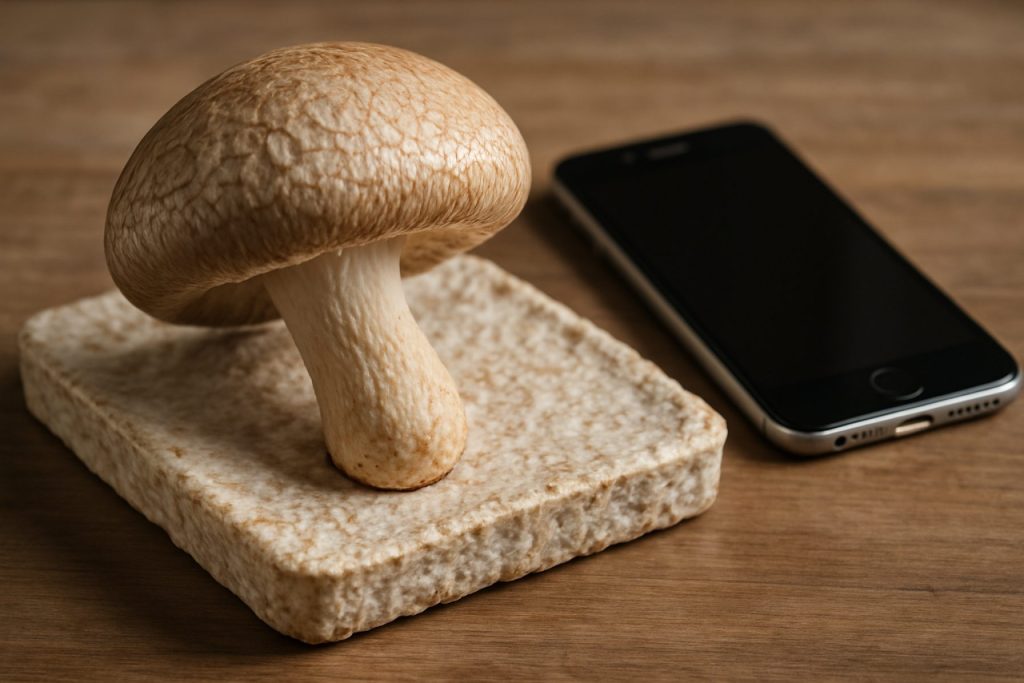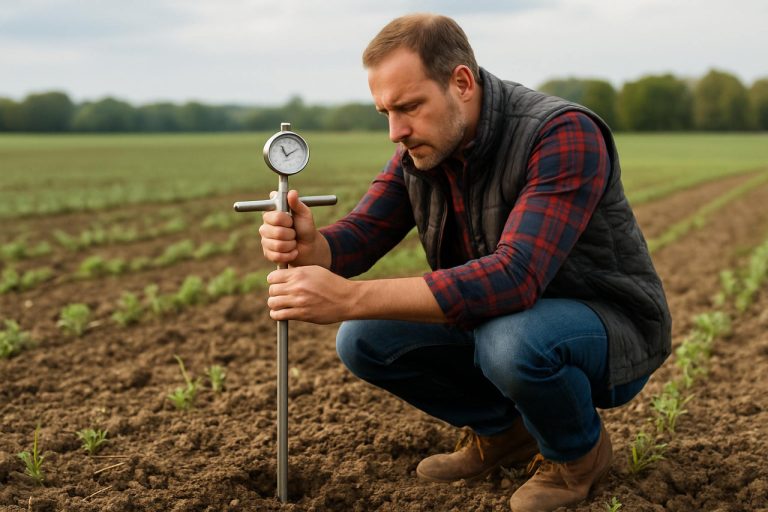
- Mycelium from the split-gill fungus (Schizophyllum commune) is emerging as a promising sustainable material, offering strength and flexibility comparable to plastics.
- This living material is grown from fungal waste and harnesses natural molecules like schizophyllan (a strong nanofiber sugar) and hydrophobin (a stabilizing protein) for unique resilience and adaptability.
- Fungal films can be precisely tuned for different applications, such as stable emulsions in food and cosmetic products, robust packaging, and humidity-responsive containers.
- Unlike most bioplastics, mycelium-based packaging can help decompose waste, creating a true cradle-to-cradle life cycle.
- Researchers envision applications in biodegradable electronics, compostable packaging, and medical materials, marking significant progress toward a future without petroleum-based plastics.
Tucked away in the heart of a Swiss research lab, a modest mushroom is rewriting the rules of sustainable materials science. The split-gill fungus—its scientific name, Schizophyllum commune—unfurls threadlike webs that glisten with possibility. Not only does it grow on what others consider waste, but it also crafts a substance sturdy enough to rival plastics yet supple enough to twist without breaking.
Guided by a clear vision of environmental stewardship, researchers nurtured the fungus to do what nature intended: build. Instead of isolating its molecular treasures, they let the living mycelium—the intricate network of fungal filaments—create an architecture in real-time. Imagine a forest root system, but one that fits between your fingers and, when ready, can be molded into a gleaming film or a robust barrier for liquids.
What imbues this living material with such extraordinary strength and resilience? The answer, woven into each delicate strand, lies in two fungal innovations. First, schizophyllan, a nanofiber-forming sugar, gives the structure tensile power and flexibility. Alongside it, hydrophobin—a protein that naturally assembles at the border of oil and water—stabilizes the surface, seizing control over the unruly dance of droplets in emulsions. Together, these molecules create a matrix that feels almost magical, self-renewing and finely attuned to shifts in its environment.
In the lab, split-gill films withstood tugs and tears that would test the patience of many bioplastics. Emulsions—blends of oil and water with textures reminiscent of milk—remained stable and safe for use in foods or skincare. The living material adapts too: humidity can tune its properties, and entire batches can be “flavored” by adjusting how the fungi grow. These responsive characteristics open doors to a future where packaging, electronics, and even food containers self-adjust for safety and freshness.
Perhaps most tantalizingly, this isn’t just a passive eco-solution awaiting compost bins. The living sheets can actively participate in breaking down waste, acting as both container and decomposer in a single product. Imagine composting bags that not only cradle kitchen scraps but help digest them into rich soil—a true cycle of life.
Visionaries in Switzerland are already exploring partnerships with electronics researchers: could a battery, for instance, combine biodegradable wires and electrodes—fused from this fungal matter—to power sensors that simply melt away when their task is done? The prospects for sustainable electronics, medical materials, and green packaging seem less like science fiction, and more like an imminent reality.
As the world races to move beyond petroleum-based plastics and toxic waste, nature’s most understated architects—a humble edible fungus—have stepped forward with a blueprint for a future that’s both functional and regenerative. To stay on top of breakthroughs like this, check out updates from Nature and discover the endless ingenuity at work in the world around you.
Takeaway: Biodegradable, adaptable, and ethically produced materials like mycelium-based composites could mean the end of single-use plastics—and spark a revolution in sustainable product design. Next time you unwrap food or toss out an old gadget, envision a future where nature’s own engineers quietly guide us toward harmony with our environment.
This Fungi Plastic Is Changing Everything: What No One’s Telling You about Schizophyllum commune’s Material Revolution
Unlocking the Full Potential of Mycelium-Based Sustainable Materials
The split-gill mushroom (Schizophyllum commune) is at the frontier of sustainable innovation, but there’s much more to this breakthrough than first meets the eye. Let’s dive deeper, answering the biggest questions readers have, exploring features, limitations, industry outlooks, and providing actionable ways you can be part of the fungal future.
—
What Makes Split-Gill Mycelium Materials Different from Other Bioplastics?
Unique Biological Architecture:
Unlike many bioplastics which are derived from starch or seaweed and require energy-intensive processing, Schizophyllum commune mycelium grows directly into the desired product shape, saving energy and resources ([ScienceDirect](https://www.sciencedirect.com)). Its natural architecture makes it inherently robust, flexible, and biodegradable.
Materials Tuning:
Humidity and nutrients in the growth medium can fine-tune material qualities (e.g., rigidity, permeability), offering “programmable” packaging or smart surfaces. This is a significant advantage over single-property conventional plastics.
—
Real-World Use Cases and Industry Trends
1. Packaging Innovations:
Mycelium-based packaging is already being adopted by companies like Ecovative and IKEA, replacing polystyrene foam and plastic wraps ([Ecovative](https://www.ecovativedesign.com)). Films from Schizophyllum commune are compostable, strong, and can adapt for food safety or electronics moisture barriers.
2. Sustainable Electronics:
Emerging research is producing mycelium-based circuit boards, batteries, and wires that can biodegrade, reducing e-waste and hazardous materials ([Nature](https://www.nature.com)).
3. Smart Composites:
The fungus’s living nature means that products can change properties in response to environmental cues—ideal for sensors or pharmaceutical packaging that indicates spoilage.
4. Agriculture & Composting:
Biodegradable bags or pots made of fungal films can break down kitchen scraps right in the compost, aiding decomposition and enriching soil.
—
Specs, Features, and Pricing Overview
– Strength: Surpasses many plant-based bioplastics in tensile strength (up to 40 MPa) and flexibility.
– Degradation: Fully compostable in soil and home composters within weeks.
– Customizability: Surface properties, thickness, and strength can be tailored with growth variables.
– Safety: Naturally anti-microbial; potential for food-grade applications.
– Cost: Currently more expensive than cheap plastic, but costs drop rapidly with mass adoption and improved cultivation (following trends seen with mycelium leather).
—
How-To Steps & Life Hacks: DIY Mycelium Projects
Want to try it at home?
1. Get a Mycelium Kit: Order spawn or a grow kit from reputable suppliers.
2. Feed with Plant-Based Waste: Use sterilized agricultural or kitchen waste as substrate.
3. Shape It: Mold into cups, trays, or films, and allow the mycelium to grow and bind.
4. Dry and Use: Once mature, dry your product to halt growth and solidify the structure.
Pro tip: Ensure sterilization and avoid contaminants for pure, uniform results!
—
Reviews & Comparisons: Fungal Films vs. Traditional Plastics
| Feature | Mycelium Film | Conventional Plastic |
| ————– | ————————– | ————————- |
| Biodegradability | 100%, home-compostable | Rare, mostly non-degradable |
| Safety | Edible, non-toxic | May leach chemicals |
| Customizability| High (physical + chemical) | Medium |
| Reusability | Single use, but composts! | Often single-use |
| Cost | Currently higher | Extremely low |
—
Controversies & Limitations
– Scaling Challenges: Up-scaling from lab to mass production requires controlled environments and time, unlike rapid plastic injection molding.
– Shelf-Life: Mycelium products can be sensitive to humidity and contamination if not properly finished.
– Allergenic Potential: Some users may be sensitive to fungal proteins (though allergic reactions are rare with thoroughly processed products).
– Economic Impact: Transition may disrupt petroleum-based plastic industries, causing resistance.
—
Security & Sustainability Insights
– Security: Fungi-based materials don’t harbor pathogens if cultivated properly.
– Environmental Impact: Uses vastly less energy, no fossil fuels, and converts agricultural wastes into new products.
– Circular Economy: Complete lifecycle—grown, used, composted, returns to soil.
—
Market Forecast & Future Trends
– Market Growth: The global mycelium-based material market is predicted to surpass $4 billion by 2030, growing at ~8% CAGR ([MarketsandMarkets](https://www.marketsandmarkets.com)).
– Key Players: Ecovative, MycoWorks, and startups in Europe and Asia.
– Emerging Legislation: EU and US pushes for single-use plastic bans are accelerating R&D and investment.
—
Pros & Cons Overview
Pros:
– Fully compostable, non-toxic
– Customizable properties (strength, flexibility)
– Low environmental impact, upcycles waste
– Potential for active packaging (antimicrobial, moisture control)
Cons:
– Higher cost (for now)
– Scalability and shelf-life hurdles
– Some applications still in early research
—
Most Pressing Questions Answered
Is mycelium safe in contact with food or skin?
Yes—once heat-treated (to stop growth and kill spores), it’s inert, nontoxic, and sometimes even edible. Regulatory approval is underway for widespread food packaging.
Can these materials replace all plastics?
No one material can cover everything, but mycelium is promising for many single-use applications (packing, electronics, small wares).
Are there risks to natural ecosystems?
If not genetically modified, mycelium fragments are indistinguishable from native decomposers and pose minimal ecological risk.
—
Actionable Recommendations & Quick Tips
– Support innovation: Buy products with verified mycelium packaging or donate to research.
– Compost mindfully: If you get a mycelium product, compost it properly to return nutrients to the soil.
– Spread the word: Advocate with businesses and local governments for mycelium-based product adoption.
—
Final Thought
With their unique blend of strength, flexibility, and eco-friendliness, fungi like Schizophyllum commune are revolutionizing how we think about— and interact with— materials. If you’re passionate about sustainability, keep an eye on updates from Nature and leading mycelium innovators worldwide.
The Next Step:
Switch to mycelium where possible, encourage trial projects at your workplace or in your local community, and watch how this humble mushroom helps rewrite the future of materials science!
—
Related Keywords: mycelium packaging, sustainable materials, biodegradable plastics, Schizophyllum commune applications, eco-friendly innovation, fungal composites, future of plastics



